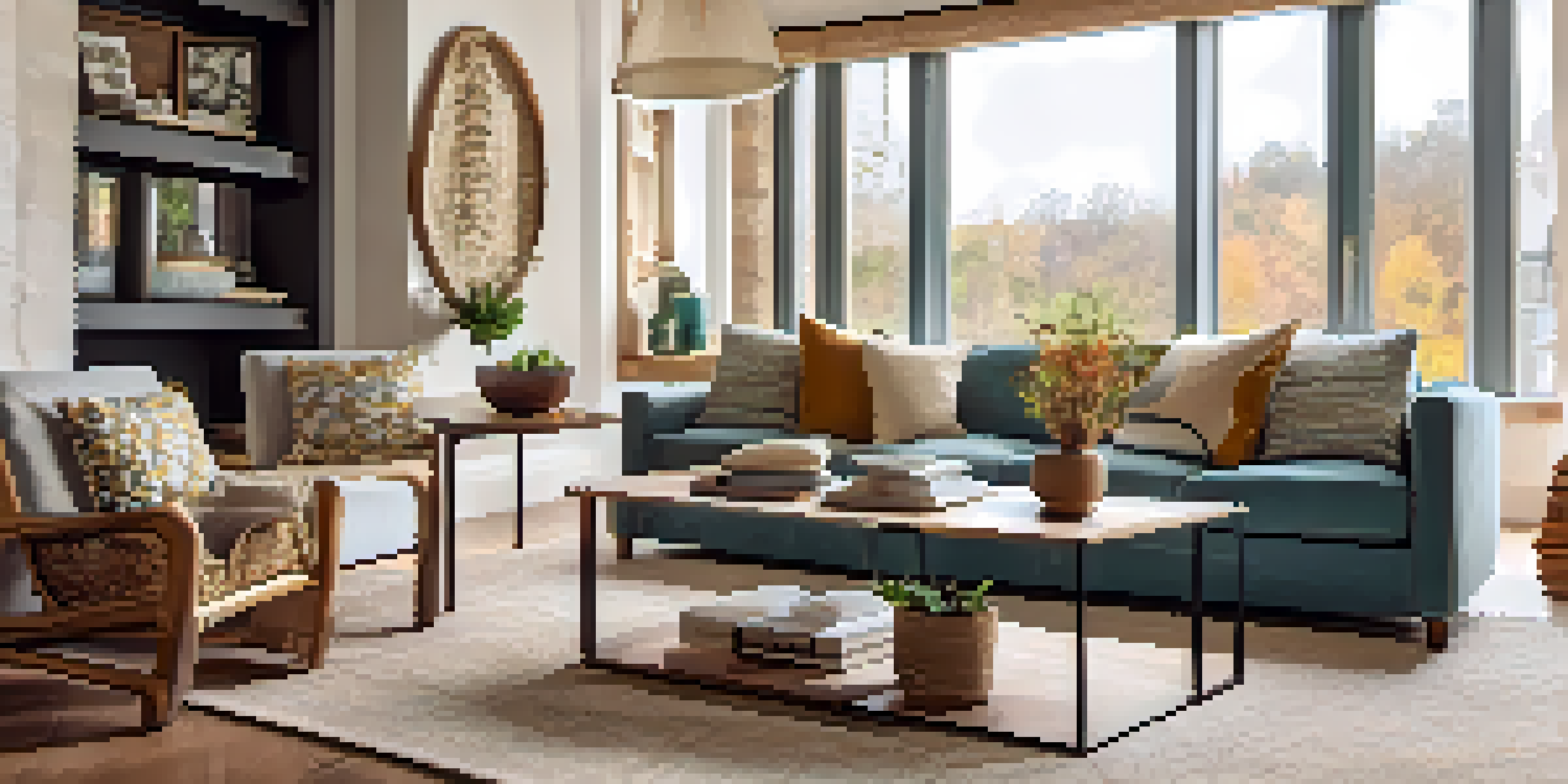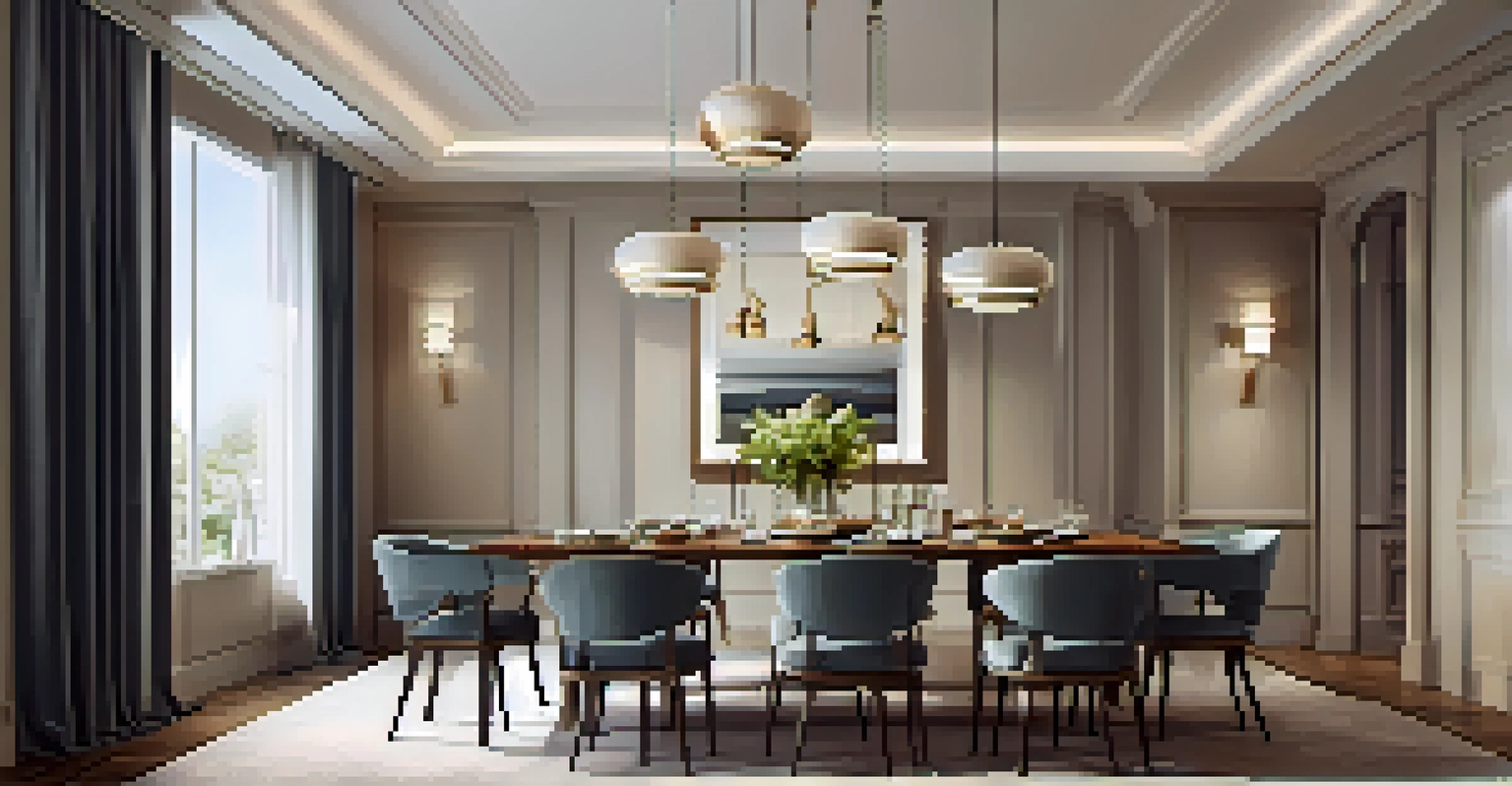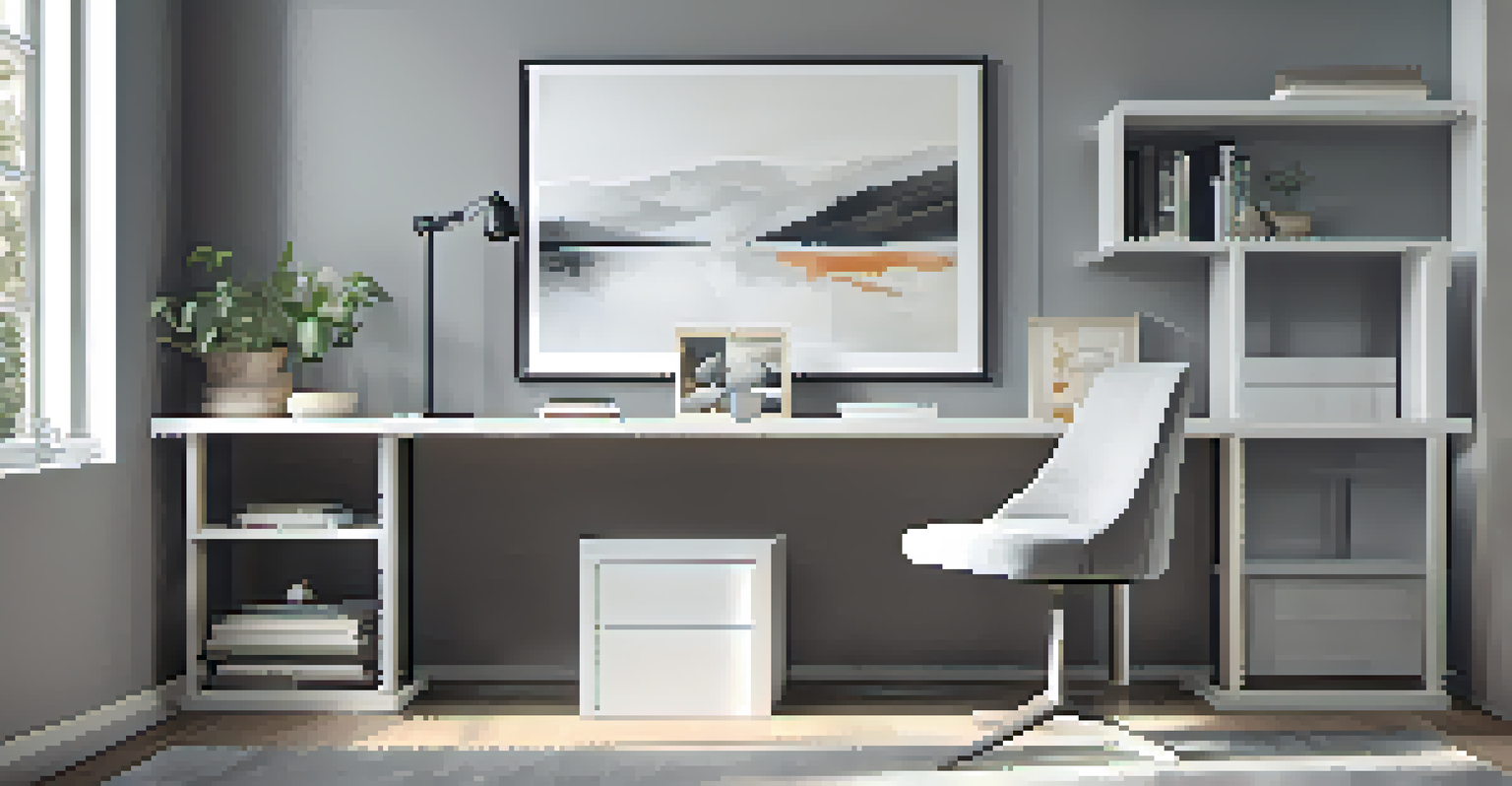The Impact of Scale in Timeless Furniture Design Choices

Understanding Scale in Furniture Design
Scale refers to the size of furniture in relation to the space it occupies. When designing a room, it's essential to consider how each piece interacts with its environment. A well-scaled piece can enhance a room's aesthetic and functionality.
Design is not just what it looks like and feels like. Design is how it works.
For instance, a large sectional sofa might dominate a small living room, making the space feel cramped. Conversely, a petite chair can get lost in a spacious area. Understanding scale helps create balance and harmony in design.
Ultimately, effective scale is about finding the right fit, ensuring each piece complements rather than overwhelms the space.
The Role of Proportion in Timeless Design
Proportion, closely related to scale, deals with the relationship between the sizes of different elements in a design. Timeless furniture pieces often exhibit well-considered proportions that contribute to their enduring appeal. For example, a coffee table that is too tall or too short can disrupt the flow of a living room's seating arrangement.

When furniture is proportionate, it creates a sense of visual rhythm that is pleasing to the eye. This careful balance ensures that each piece serves its purpose without clashing with others.
Understanding Scale Enhances Design
Scale is crucial in furniture design as it determines how each piece interacts with its space, creating balance and harmony.
In timeless design, focusing on proportion leads to spaces that feel cohesive and well-thought-out, allowing for both comfort and style.
How Scale Affects Aesthetic Appeal
Aesthetic appeal in furniture design is significantly influenced by scale. A room filled with oversized furniture can appear chaotic, while too-small pieces can make it feel stark and uninviting. Finding that sweet spot in scale enhances the overall beauty of a space.
Good design is obvious. Great design is transparent.
For example, a beautifully crafted dining table can become the focal point of a room when it's proportionate to the surrounding chairs and space. This balance invites conversation and interaction, showcasing the importance of scale.
Ultimately, thoughtful scaling not only enhances aesthetics but also enhances the overall experience of the space.
Creating Functional Spaces with Scale
Functionality is a core element of furniture design, and scale plays a crucial role in achieving it. When furniture pieces are appropriately scaled, they facilitate movement and interaction, making spaces more livable. Think about a well-sized dining table that allows guests to sit comfortably without feeling cramped.
In contrast, poorly scaled furniture can hinder functionality, making everyday tasks feel cumbersome. For instance, a large bed in a tiny bedroom can restrict movement, creating frustration rather than comfort.
Proportion Creates Visual Harmony
Well-considered proportions among furniture pieces contribute to a cohesive and timeless design that enhances both comfort and style.
By prioritizing scale, designers can create functional spaces that cater to the needs of the users, enhancing their daily lives.
Timeless Materials and Their Scale Considerations
The materials used in furniture design also interact with scale in meaningful ways. For instance, a bulky wooden table may feel more substantial in a room with high ceilings compared to a low-ceiling space. The choice of material can affect the perceived weight and presence of a piece.
Additionally, lighter materials like metal or glass can provide a sense of openness, especially in smaller areas. This contrast highlights the importance of choosing materials that complement the scale of the space.
Ultimately, understanding how materials and scale work together allows for more informed and timeless design choices.
Cultural Influences on Scale in Furniture Design
Cultural factors also play a significant role in shaping our perceptions of scale in furniture design. Different cultures may favor varying sizes and styles, impacting how we think about furniture. For example, minimalist Japanese design often emphasizes smaller, functional pieces that promote simplicity and tranquility.
Conversely, some Western designs may lean towards larger, statement pieces that showcase grandeur and individuality. Understanding these cultural nuances can help designers create pieces that resonate with specific audiences.
Cultural Influences Shape Preferences
Cultural factors significantly impact perceptions of scale in furniture design, leading to diverse styles that resonate with different audiences.
By embracing diverse cultural perspectives on scale, designers can craft timeless furniture that appeals to a broader range of tastes.
Future Trends and Scale in Furniture Design
As we move into the future, the impact of scale in furniture design continues to evolve. With the rise of remote work and smaller living spaces, there is a growing need for furniture that balances functionality and aesthetics without overwhelming the environment. Designers are increasingly exploring modular and adaptable pieces that can be easily scaled to fit various spaces.
This trend not only addresses space limitations but also promotes sustainability by encouraging the use of versatile furniture. By designing with scale in mind, creators can offer solutions that are both practical and stylish.

The future of timeless furniture design lies in the ability to innovate while respecting scale, ensuring that pieces remain relevant in diverse spaces.